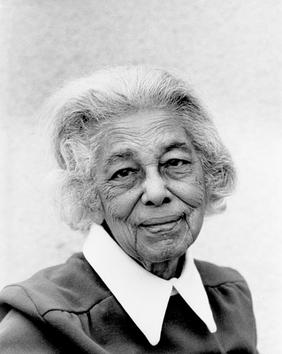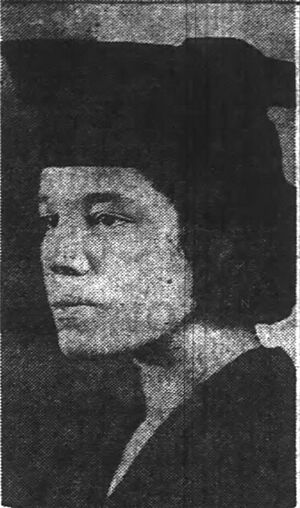Beatrice Morrow Cannady facts for kids
Quick facts for kids
Beatrice Morrow Cannady
|
|
|---|---|
 |
|
| Born |
Beatrice Hulon Morrow
January 9, 1890 Littig, Texas, United States
|
| Died | August 19, 1974 (aged 84) Los Angeles, California, United States
|
| Nationality | American |
| Alma mater | Northwestern College of Law |
| Occupation | Publisher, civil rights activist |
| Spouse(s) | Edward Daniel Cannady |
Beatrice Morrow Cannady (born January 9, 1890 – died August 19, 1974) was a very important civil rights leader. She worked in Oregon, United States, in the early 1900s. She was the editor of The Advocate, which was Oregon's biggest newspaper for African-American people. She also helped start the Portland, Oregon, chapter of the NAACP. She was the vice president of this group.
Early Life
Beatrice Hulon Morrow was born in Littig, Texas, in 1890. She was the second-oldest daughter of George and Mary Francis Carter Morrow. Her parents were farmers who taught their children how important education was. Beatrice went to Wiley College. She loved to sing from a young age. When she was a young woman, she moved to Chicago to study music.
Fighting for Civil Rights
In June 1912, Beatrice Morrow married Edward Daniel Cannady. He had helped start The Advocate. This was one of the first newspapers in Portland, Oregon, owned by Black people. After moving to Portland, Beatrice became an editor for The Advocate.
Her work with the newspaper helped show how unfair some people were treated. She wrote about racial discrimination in the early 1920s. This even made the governor of Oregon, Ben W. Olcott, speak out against the Ku Klux Klan. This group was causing problems in Oregon at that time.
Beatrice also helped create the Portland chapter of the NAACP in 1913. This was the first NAACP branch started west of the Mississippi River. This group is still active in Portland today. As the chapter's secretary, Beatrice worked to remove unfair, racist words from Oregon's constitution. They succeeded in 1926 and 1927 when these changes were approved. Beatrice also led protests against a movie called The Birth of a Nation, which spread harmful ideas.
Beatrice Cannady graduated from Northwestern College of Law in 1922. This made her the first Black woman to finish law school in Oregon. She then became the first Black woman to work as a lawyer in Oregon. She was a Republican and was the first Black woman to run for state representative. Beatrice successfully pushed for new civil rights laws in Oregon. Her efforts also helped integrate public schools in Longview, Washington, and Vernonia, Oregon.
In 1927, Beatrice represented Oregon at a big meeting called the 4th annual Pan-African Congress in New York City.
Later Life
Beatrice Cannady had two sons, George and Ivan Caldwell Cannady. She divorced Edward Cannady in 1930. A year later, she married Yancy Jerome Franklin, who worked at The Advocate. They divorced in 1936.
Around 1938, Beatrice left Oregon and moved to Los Angeles, California. There, she married Reuben Taylor. She worked for the Precinct Reporter, a newspaper in Southern California that served the Black community.
Legacy
Beatrice Morrow Cannady was a leading activist for almost 25 years. She helped make things better for future civil rights leaders in Oregon. To honor her, a new school in the North Clackamas School District is named the Beatrice Morrow Cannady Elementary School. Also, a new affordable housing building in North Portland will be named the Beatrice Morrow Building.


